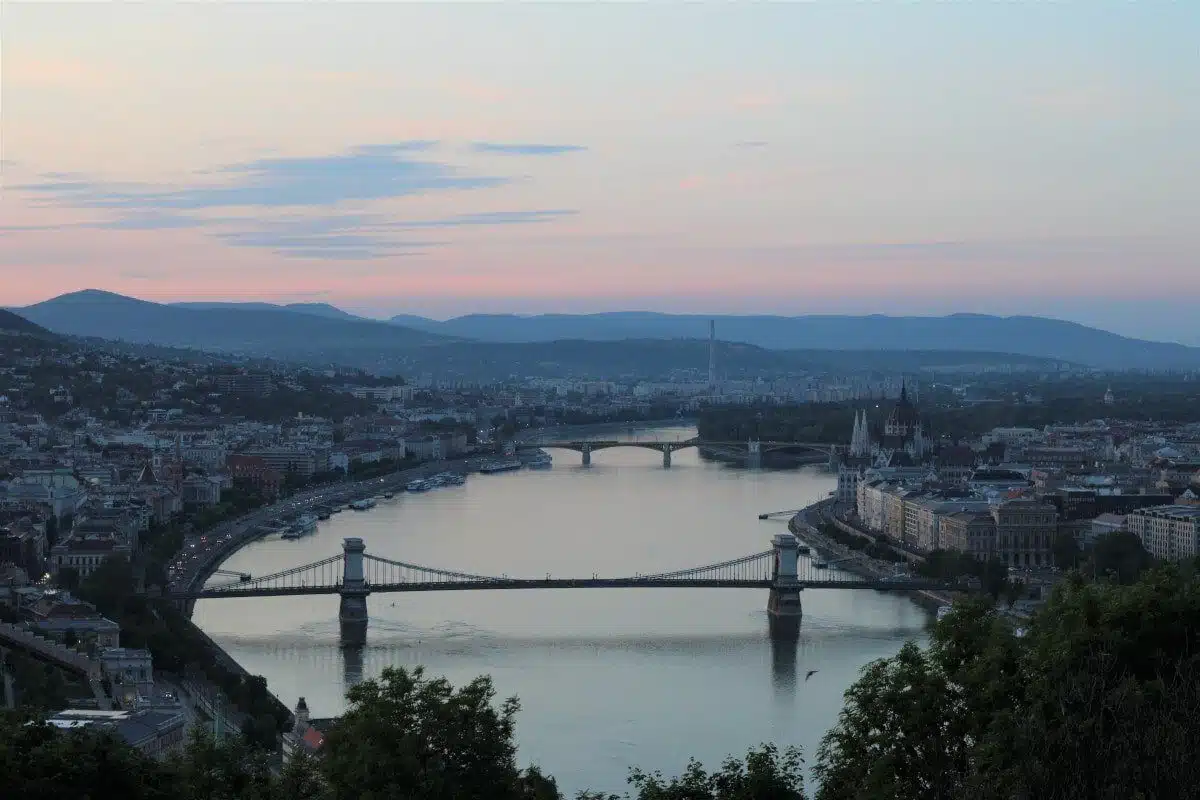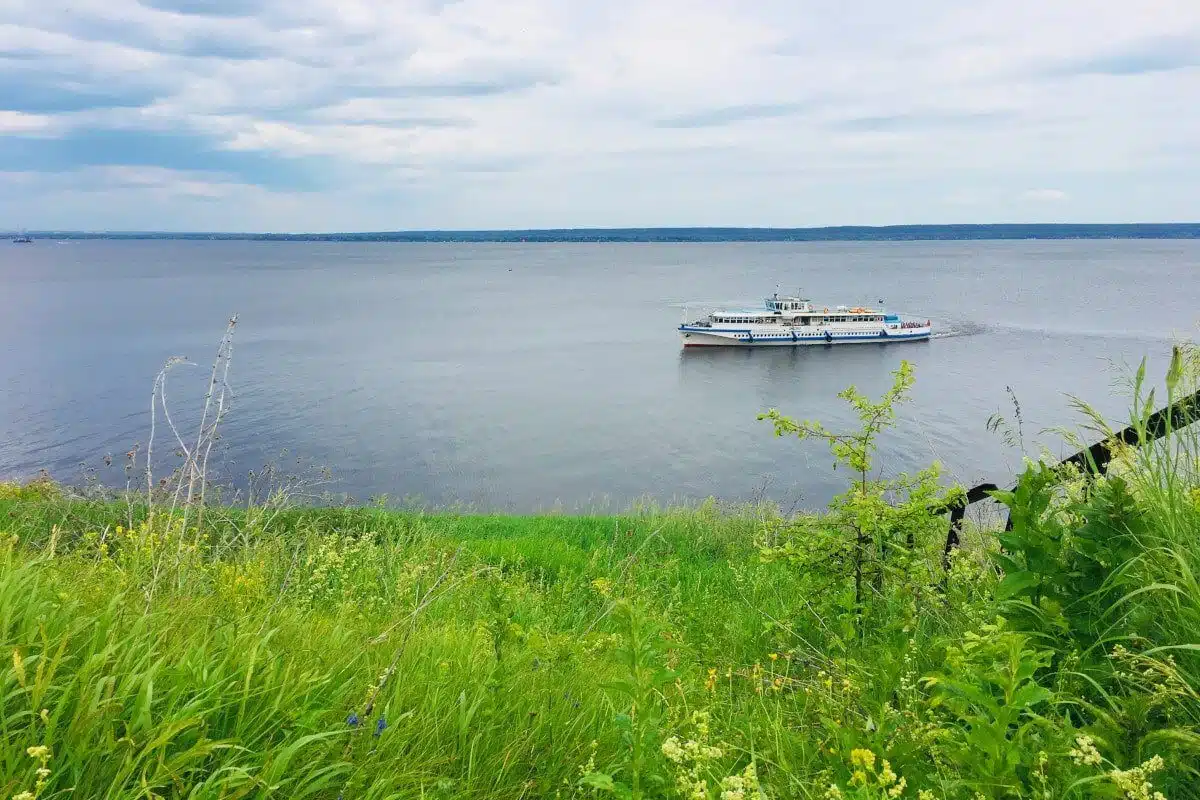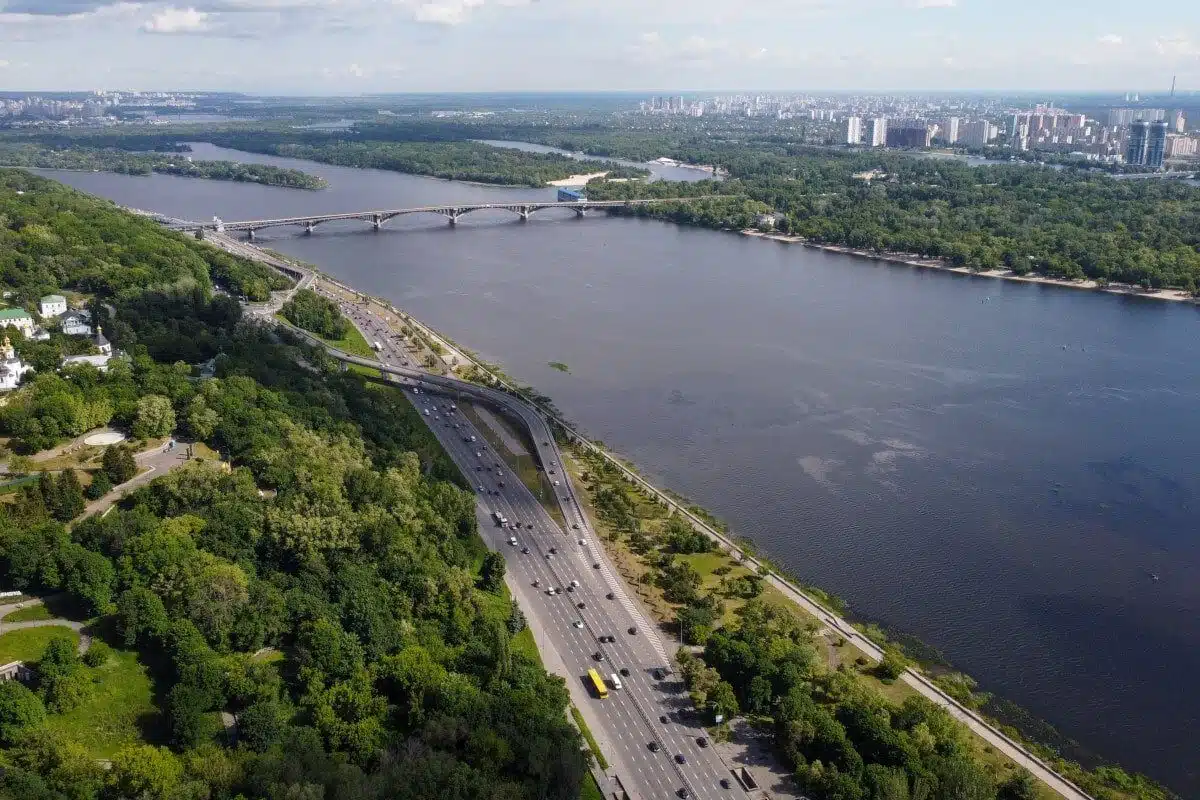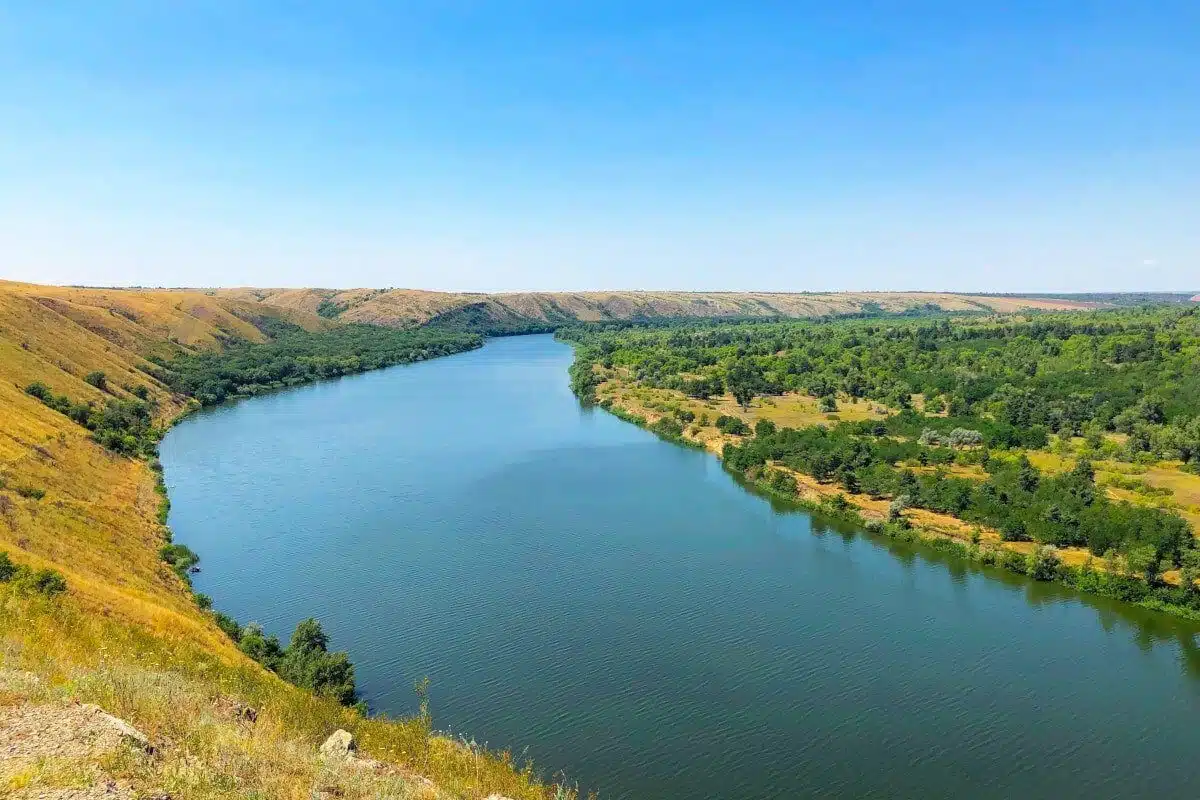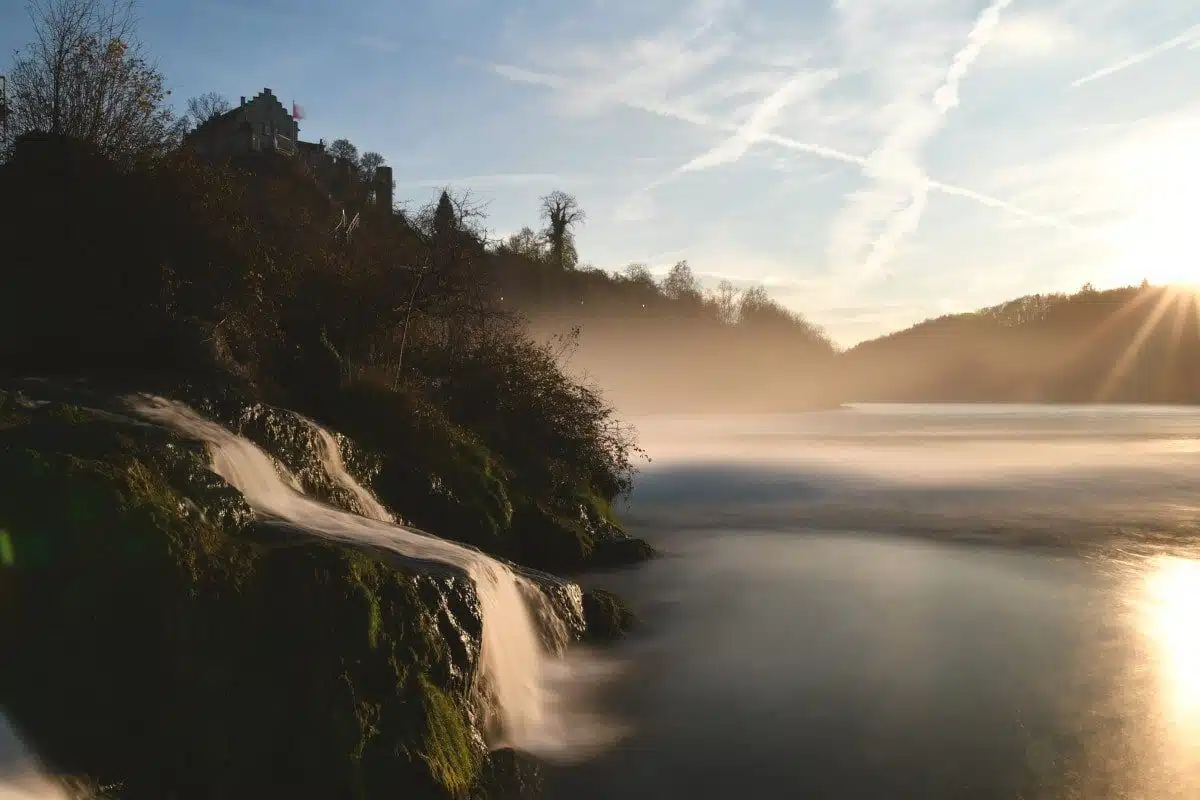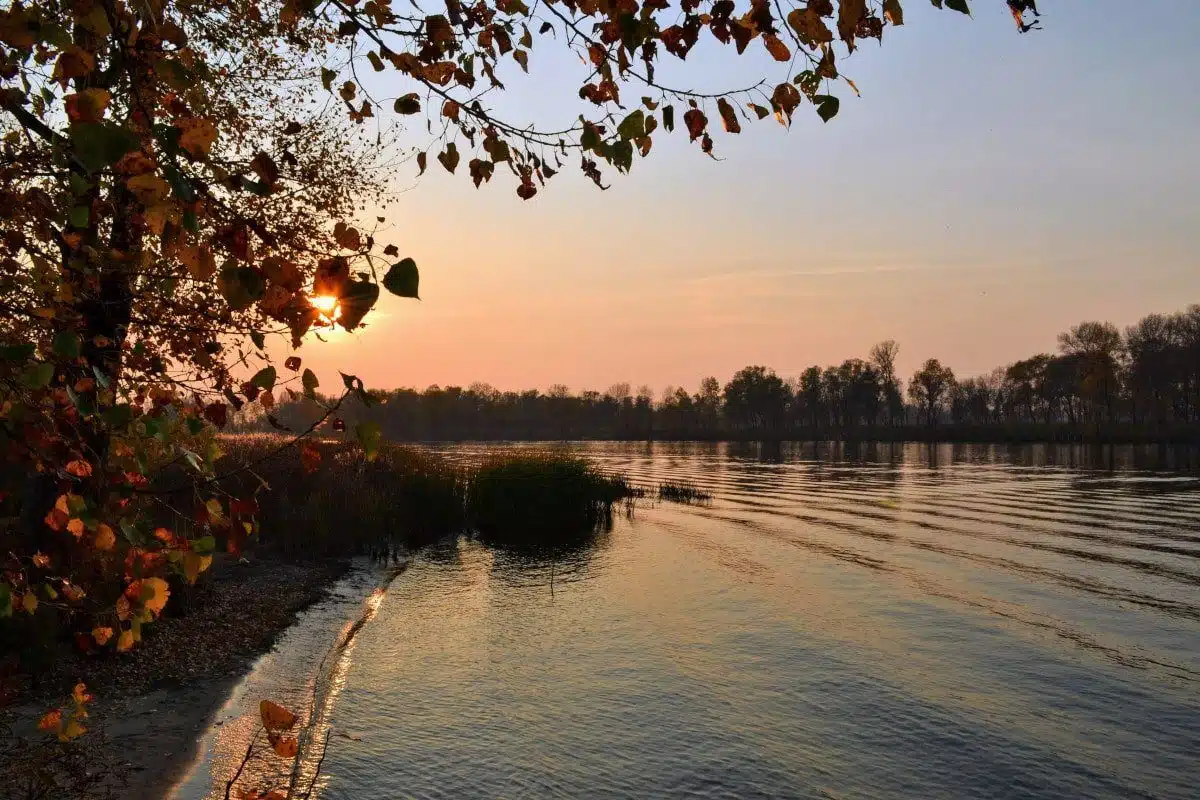Trying to find out about Europe’s longest rivers? I hope this post helps!
Rivers are captivating.
Big or small, raging or slow-flowing, there’s just something special about these shifting, drifting, and swirling bodies of water.
And the world’s full of some absolutely amazing ones!
Every continent boasts rivers of supreme size and beauty- many of which influence everything from the landscapes to the way of life in the area.
However, you’ve never seen rivers until you’ve taken a tour of Europe!
The waterways here are huge, awe-inspiring, and guaranteed to leave you with plenty of ‘gram-worthy moments…
Today, I want to shine a spotlight on 22 of Europe’s longest rivers.
Read on to discover the longest rivers in Europe so you can start planning your next adventure!
Here we go then: 22 of the longest rivers in Europe, starting with the Danube!
Interested in long rivers in Europe? You might also like…
- 18 Outrageous Dream Travel Destinations
- A Complete Guide to Dancing in Spain
- 40 Fun Facts about the UK
- 20 Hottest Countries in the World
- 20 Coldest Countries in the World
- 12 Famous Landmarks in Asia
- 12 Famous Landmarks in Australia
- 30 Fun Facts about Mexico
- 40 Different Types of Tourism
- The Best Jobs for Adventurers
22 Longest Rivers in Europe
In no particular order, let’s dive into this list of 22 of Europe’s longest rivers!
1. Danube River
The Danube River is officially the second longest river of Europe, spanning a whopping 1,777 miles (2,860 kilometres) in length.
This mighty body of water flows through a large portion of the central and southeastern part of the continent, travelling all the way from the Black Forest in Germany into the Black Sea.
In all, the Danube River passes through 10 different countries and intersects with three national capitals as it winds around the continent:
Vienna (Austria), Budapest (Hungary) and Belgrade (Serbia).
As an emerging source of hydroelectric power, the Danube also helps support the economic growth of its nearby regions.
2. Ural River
The Ural River flows through Russia and Kazakhstan.
It’s 1,509 miles (2,428 kilometres) long, draining in an area of 91,500 square miles.
The third longest river Europe has to offer, it rises impressively in the Ural Mountains near Mount Kruglaya in Russia.
From there, it flows south along the range’s eastern flank, travelling past the magnificently named Magnitogorsk.
From November to April, it’s common to find large parts of the Ural frozen solid, though it thaws and flows rapidly in the spring.
If you plan to travel on the Ural, you can do so all the way up to the city of Oral in Kazakhstan.
Fun fact: Before 1775, this waterway was known as the Yaik River.
3. Pechora River
The Pechora River is 1,124 miles (1,809 kilometres) long and flows from northwest Russia into the Arctic Ocean.
This river rises near Mount Koyp in the northern Urals.
From there, it flows south into a deep valley and then turns west and then north. After criss crossing an extensive, flat basin, it flows into a delta and enters the Barents Sea.
What’s the longest river in Europe? The Volga! This vast stretch of water flows for an incredible 2,294 miles through the continent.
4. Volga River (The Longest River of Europe)
The Volga River’s located near the Russian city of Ulyanovsk and takes the top spot as the largest river of Europe.
The river itself is 2,294 miles (3,692 kilometres) and is part of a greater network of rivers and intermittent streams that empties into the Caspian Sea.
In all, those waterways span a collective 357,000 miles!
The source of the Volga sits about 748 feet (228 metres) above sea level, while its mouth drops down to 92 feet (28 metres) below sea level.
Recognized as the longest river of Europe, it boasts a natural beauty that I imagine must be seen to be believed.
5. Kama River
Spanning 1,122 miles (1,805 kilometres), the Kama River is another prominent waterway in western/central Russia.
It rises in Udmurtia’s Upper Kama Upland and then flows north, east, and southwest.
Finally, it enters into the Volga River, right below Kazan.
The Kama River’s claim to fame (other than being one of Europe’s longest rivers, of course)?
It’s recognized as the Volga River’s “longest left tributary”!
6. Northern Dvina-Vychekda River
Here’s another mighty Russian River:
The Northern Dvina-Vychekda River is 1,084 miles (1,744 kilometres) long and rise in the north of the country.
It flows along the Vologda Oblast and Arkhangelsk Oblast, eventually spilling out into the White Sea’s Dvina Bay.
At 1,423 miles long, the Dnieper, located in Russia, Belarus, and Ukraine, is another of the longest rivers of Europe.
7. Dnieper River
The Dnieper River is a vast and meandering 1,423 miles (2,290 kilometres) in length.
It begins in Russia’s Valdai Hills near the city of Smolensk, where the sprawling glaciers feed it. From there, the Dnieper River flows through Belarus and Ukraine, eventually emptying once again into the Black Sea.
This river gets its name from the ancient Iranian phrase, “Danu apara”, which means “the river far away.”
For centuries, it’s served as an important commercial hub for several groups of people, including the Vikings, Byzantines, and Slavs.
8. Oka River
There’s a bit of a theme here…
The Oka River lies in western Russia.
While the Kama River’s recognized as the Volga’s largest left-bank tributary, the Oka River is the Volga’s largest right-bank tributary.
This one’s 932 miles (1,500 kilometres) long and starts in the Central Russian Upland before travelling across a valley to a place called Kaluga.
From there, it turns eastward across an expansive lowland and finally joins the Volga at the city of Nizhny Novgorod.
9. Belaya River
The Belaya is 889 miles (1,430 kilometres) long.
Yet another Russian river (which is unsurprising, given the size of the country), it’s located in the Bashkortostan Republic of the western/central part of the country.
This one’s considered the largest tributary of the Kama River!
Like a few other rivers on this list, the Belaya River starts near the southwestern base of the Ural Mountains before charting its course through the country.
No list of the longest European rivers would be complete with the Don!
10. Don River
The Don River flows from Central Russia to the Sea of Azov in the Caucasus.
It’s 1,212 miles (1,950 kilometres) long and has been a powerhouse in Russia for the entirety of the country’s history.
Its history goes back to the days of Peter I the Great, when the leader commissioned a hydrographic survey to learn more about the river’s course.
While large-scale engineering projects have cemented the Don River’s position as an economic mainstay, most people (…apparently!) recognize it more as the backdrop for 20th-century author Mikhail Sholokhov’s colourful novels.
11. Dniester River
The Dniester River flows through Ukraine and Moldova.
It is 846 miles (1,362 kilometres) long, rising on the north side of the majestic Carpathian Mountains, it flows south and east to the Black Sea near Odessa.
Not only is the Dniester River recognized as one of the longest rivers in Europe, but it’s also the second-longest river in Ukraine (after the Danube) and the primary water artery of Moldova.
12. Vyatka River
The Vyatka River covers an impressive 816 miles (1,314 kilometres).
Flowing through the Kirov Oblast and Russia’s Republic of Tatarstan, it’s a right tributary of the Kama River.
This one rises in the Upper Kama Upland of Udmurtia (try saying that 3 times in a row as fast as you can) and from there it flows north, east, south, and southwest.
The Rhine might not be the longest river Europe has to offer, but it’s certainly one of the better known ones!
13. Rhine River
On this list of long rivers in Europe, the Rhine River is arguably one of the best-known.
This iconic waterway flows through six countries and serves as an important link between southern and northern Europe
In addition, it rounds out this top-10 list of longest European rivers!
It’s 820 miles (1,320 kilometres) long and starts at the base of the mountain brooks in the gorgeous Swiss Alps.
From there, it flows north into Lake Constance in Switzerland before passing over the awesome Rhine Falls.
Finally, it travels to Basel, where it’s used to transport goods and raw materials.
14. Donets River
The Donets River is a tributary of the Don River that flows through southwestern Russia and eastern Ukraine.
It is 654 miles (1,053 kilometres) long and originates just north of Belgorod, in the Central Russian Upland.
From its starting point, the Donets flows southeast through Ukraine and then moves through Russia, where it feeds into the Don River.
Fun fact: You may also hear this river called the Seversky Donets or Siverskyi Donets.
15. Elbe River
The Elbe River is 678 miles (1,091 kilometres) long.
One of the major rivers in central Europe, it flows from the Giant Mountains in the northern Czech Republic to the North Sea in Cuxhaven.
Along the way, it travels through most of Bohemia, as well as Germany.
Another of the largest rivers in Europe that flows through Ukraine and Russia, the Desna is actually a tributary of the Dnieper.
16. Desna River
While the Dniester River’s one of the longest rivers in Ukraine, the award of the country’s longest tributary goes to the Desna.
The name of this river means “right hand” in the Old East Slavic language.
It’s 702 miles (1,130 kilometres) long and rises in the Smolensk Heights in Russia’s Smolensk Oblast.
17. Vistula River
Another of Europe’s longest rivers, The Vistula’s recognized as the largest river in Poland.
It’s also the largest waterway that feeds into the drainage basin of the Baltic Sea!
The Vistula covers a sizeable 651 miles (1,047 kilometres) and is considered an important waterway in eastern Europe.
18. Daugava River
The Daugava River is 634 miles (1,020 kilometres) long and, like the Dnieper River above, rises in Russia’s Valdai Hills.
From there, it flows through Belarus and then onto lovely Latvia before ending its awesome journey at the Gulf of Riga, located in the Baltic Sea.
The beautiful Loire isn’t the longest river in Europe, but it is the longest river in France!
19. Loire River
Although the Loire River is only the 171st-longest river in the world, it takes the mantle as the longest river in France.
It’s also one of the most useful, as it’s responsible for draining more than one-fifth of the country’s land.
20. Tagus River
The Tagus River has the distinction of being the longest waterway on the Iberian Peninsula!
After rising in the Montes Universales around Mideastern Spain, it flows to the west, travelling across Spain and Portugal.
Finally, having travelled 626 miles (1,007 kilometres), it empties into the Atlantic Ocean at a spot near Lisbon.
The Loire River is 625 miles (1,0006 kilometres) long.
It rises in the southern Massif Central and flows north and west to the Atlantic Ocean. It empties into the ocean just south of the Bretagne, or Brittany, Peninsula.
21. Western Dvina River
The Western Dvina River is considered a major river in Latvia, as well as northern Belarus. Spanning 624 long miles (1,0005 kilometres), it rises, like a few others, in the Valdai Hills.
Once it leaves there, the water flows in a large arc, travelling south and southwest across Russia and Belarus.
Finally, it pivots northwest before crossing Latvia.
22. Khopyor River
Last but not least we have The Khopyor River, located in eastern Russia.
At 608 miles (979 kilometres) long, it’s by no means the longest river in Europe, but it is the biggest left tributary of the Don River.
One of the most accessible waterways on this list, the Khopyor’s navigable about 323 kilometres (200 miles) from its mouth.
Explore Europe’s Longest Rivers
While these are a brief selection of Europe’s longest rivers, they definitely aren’t the only ones to explore!
In all, there are more than 150 transboundary rivers that travel across and around the continent.
With any luck, the options on this list will have given you some ideas on which ones to see first.
Looking for a few other spots around the world where water’s the main attraction?
Check out my recent post on 20 amazing travel destinations with crystal clear water!

